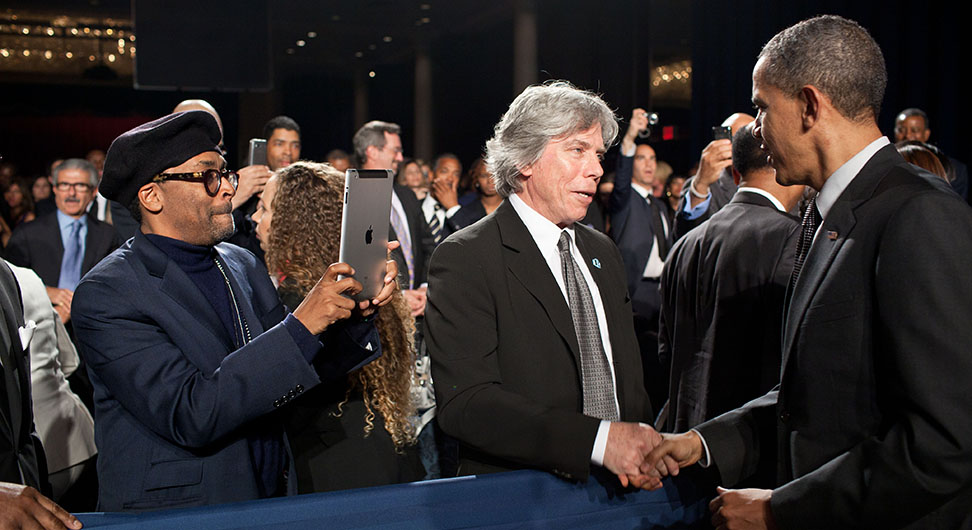Tracking Social Technology & Voter Engagement
I’ve noticed that, for the first time in my life, I’m overwhelmed by politics. In high school, it was a topic that sometimes came up among my debate-team friends. In college, and my early years of employment, it was a side conversation.
Now I can’t go a day without someone mentioning a candidate at least three times, and my Facebook news feed is covered almost exclusively in images, GIFs and video clips lampooning or praising candidates. Maybe I’m now at that age when we begin to center conversations around politics. Maybe it’s all media buzz. Maybe, even if it’s overwhelming, it’s actually a good thing: voter turnout since 2008 is up from where it was in the 90s.
Regardless, I find myself asking the question more frequently: why are so many of my friends and colleagues suddenly in tune with the election? What changed to make this a central part of our lives again?
Why are so many of my friends and colleagues suddenly in tune with the election?
You could easily argue that the trying times we live in beget political action–but during every time of significant political activity in American history, technology seemed to come along for the ride.
Think about the 1960 presidential debates, during which technology (that is, television) presented candidates in a wholly new light: everyday people could truly see them for the first time. This almost single-handedly swung the election in favor of the younger, more energized JFK–it gave apathetic or indecisive voters a new context in which they could base a political stance.
During the 80s we saw niche cable television networks spring up everywhere, covering virtually every popular interest. MTV found an opportunity to politically engage its audience in the early 2000s with Vote or Die, a campaign run by Puff Daddy aimed at getting out the vote among young popular music fans. Had cable television never come to be, enabling specialty networks like MTV, that would never have happened.
Of course, Vote or Die is basically dead and gone at this point, but that’s only because the idea also went stale. In a blog post written before the 2014 midterm elections, Benjamin Studebaker suggested that “when P-Diddy tells young people to vote or die, he can give all sorts of reasons why millions of young people should vote, but no reason why any given person should vote.” People were able to easily ignore the message on an individual level–while strong in tone, it lacks depth. He continues, however, “there are many ways to get the influence you need to make a difference.” Studebaker doesn’t necessarily fault the program or any candidate tactic, per se, but perhaps a more intimate connection with voters is necessary to clearly understand and respond to their concerns.
Technological and cultural innovation has, quite literally, given apathetic citizens new reasons to vote.
While Vote or Die was briefly capturing the attention of America’s youth, Facebook was plotting its eventual cultural takeover. Facebook feels like it’s been around forever at this point, but its influence on social behavior and pop culture is obvious; just eight years later, it hosted its first Town Hall meeting.
This was yet another way for disengaged citizens (specifically, younger, tech-savvy ones) to engage with politics and find reasons to vote. The rapid expansion of the social media space has introduced even more interactive solutions for candidates to converse with potential or apathetic voters. For example, every candidate in the 2016 election has Instagram, Periscope and Snapchat accounts, and their marketing teams are finding new ways to leverage these platforms to interact with young voters.
Technological and cultural innovation has, quite literally, given apathetic citizens new reasons to vote by presenting new contexts on which to base voting decisions.
If social tech is pushing my network to get out and vote, is it affecting the same change in other demographics throughout the country? Are fervent Trump supporters endlessly posting about their fervent Trump support to their friends, in the same way my friends are blabbing nonstop about their liberalism? Software is eating the world, and the world has a smartphone and a Facebook account, so why don’t I see this?
Much of it has to do with context-setting, and much of that can be done by friends and family. In 2010, a single Facebook message got over 300,000 people to vote because that message got stuck in a viral loop–the original writer shared the message to his closest friends, who then shared the message with their own friends, and so on.
In the past two years, various people have speculated on Facebook’s massive direct impact on voter turnout. Facebook’s audience tends to skew younger and female, so the impact on voter turnout is naturally felt most among these demographics. There are also plenty of businesses out there whose sole purpose is to thrive on “viral” content–and some of them, like Upworthy, focus on the most viral content with a meaningful underlying message. These topics also generally skew more liberal–perfect for the young, predominantly female audience on Facebook and other networks on which this content is shared.
But it’s fairly obvious that social networks have also had their negative effects on the political process. Namely, they’ve encouraged polarization and filtered confirmation bias.
That begs two questions:
- As social media hype starts to lose its luster in the face of content overload and social upheaval, what will be the next technological advance to affect political participation?
- How does technology encourage voter turnout among those who are generally more resistant to technological change?
I certainly can’t answer either of these questions today, but some startups are exploring them now. Organizations like Agora and Civis Analyics are working to bring better opportunities for voters to engage with their candidates, and better data to those candidates such that they can reach out to untapped audiences. Perhaps that’s the next major area of innovation that will affect the vote–rather than presenting the candidates in different ways to the voter, reconfigure how the voter and candidate interact.
Only time will tell how these advances affect how citizens engage (or not) in our political process.
Elsa Sze, founder of Agora, positions the platform as a means to a voice every day: live-streaming town hall meetings that anyone can set up at any time, publicly-accessible Q&As, detailed insights for officials. It makes sense, given our current sociocultural landscape, driven by interactivity and choice and media over-saturation. What’s better than being able to easily target your perfect voter and engage in a wholly two-sided, honest dialogue with him or her?
Only time will tell how these advances affect how citizens engage (or not) in our political process. The challenge (as many have mentioned when attempting to disrupt the political process) is adoption: how do you engage reluctant citizens while also providing new value to candidates and their supporters? How do you provide meaningful connections that influence positive social and political change while still capturing an increasingly distracted public’s attention?
Questions aside, it’s hard to deny that, regardless of how directly technology is aiming to disrupt the vote, changes in each go hand-in-hand. I’m curious to see how, in the modern political landscape, new advances in app development, virtual/augmented reality, hyper-local social networking, and political science bring voter turnout to its next natural progression.
Brandon Lucas Green is a product manager at Wayfair, a blogger and a musician.
This work is licensed under a Creative Commons Attribution-ShareAlike 4.0 International License.



